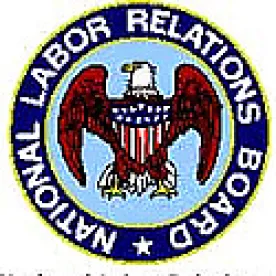As the Trump administration begins to exercise its power through U.S. agencies enforcing federal employment laws, two Republican appointees will soon reshape the National Labor Relations Board (NLRB) with a majority presumably more sympathetic to business interests than that of the Obama-era Board. After the pro-labor policy changes wrought by the Obama NLRB, pro-business groups anticipate the possibility of restoring traditional union election practices, returning to the conventional view of joint employer relationships, and reinstating business owners’ ability to impose effective workplace rules. Employers’ patience will be tested, however, considering the procedural hurdles facing reversals of administrative doctrine and rules.
Federal Procedural Hurdles
As a threshold matter, though the president recently appointed two new NLRB members, the term of another Republican appointee will expire in December of 2017. The president is empowered to nominate another Republican for that position, but the NLRB will essentially remain evenly divided until that nominee receives Senate approval. As a result, the steady majority required to make significant changes to federal policy will not exist until next year at the earliest.
Regarding the April 2015 “ambush election” regulations—rule changes intended to tilt union elections in favor of labor—any alteration or repeal will require a lengthy notice-and-comment period. Prior to issuing the existing rule, the NLRB initially took about six months to issue the first version in December of 2011, following solicitation of public comments and the holding of policy hearings. Litigation over the NLRB’s lack of a member quorum then delayed the rule more than three years before its implementation in April of 2015, after which the rule still had to survive multiple court challenges on its merits. While the NLRB quorum challenge was unusual, it points up how unpredictable such rule changes are.
The procedures for repeal are the same as for issuance, requiring formal notice of the proposed action through the Federal Register, after which the agency must allow time for the public, including aggrieved labor unions, to provide evidence and express opinions on the proposed change. Only after a formal hearing to consider the public comments may the agency move forward.
Litigation over such changes can be time-consuming. Efforts to repeal likely would face a lawsuit requiring the NLRB to provide to a federal court a reasoned explanation of the change and the evidence relied upon to justify it. (In Encino Motorcars, LLC v. Navarro, the Department of Labor reversed its prior position in issuing regulations and federal courts determined that they owed no deference to the agency absent a “reasoned explanation” of change.)
Non-regulatory changes achieved through case decisions may also face a long road. The time required for doctrinal reversals is typically substantial, requiring a willingness on the part of an employer to invest legal fees in a multistep challenge to the existing precedent. First, an employer must challenge a complaint before an administrative law judge (ALJ). ALJs are bound by existing NLRB precedent, such as the undesirable 2015 joint employer test, regardless of changes in NLRB membership. Only upon issuance of an adverse ALJ decision, which could take more than six months to obtain, may the employer appeal to the NLRB to change the law. This process requires another outlay of legal fees and another 12 to 24 months to secure a decision. Further, politics also plays a role here, as an ALJ sympathetic to the existing standard has wide discretion to drag his or her feet in issuing a decision under a contrarily inclined NLRB.
Nor is the NLRB the final word. While judicial scrutiny of NLRB decisions is moderate, that process is again lengthy. The Supreme Court of the United States has made clear that periodic changes in labor policy are to be expected, with the pendulum swinging toward business or labor based on “significant developments in industrial life believed by the Board to have warranted a reappraisal.” In making such changes, the NLRB must (a) expressly recognize that a change will occur through its ruling and (b) provide a cogent explanation linking the overturning of precedent to a rational evaluation of pertinent evidence.
While this seems straightforward, the NLRB sometimes fails to clear this hurdle. Earlier this year, the D.C. Court of Appeals reiterated that standard in striking down an NLRB decision to extend the agency’s jurisdiction over airline contractors that would historically be excluded from NLRB purview. The court found that the NLRB had overruled its own precedents with no explanation, stating, “It is well-settled that the NLRB . . . cannot ‘turn[] its back on its own precedent and policy without reasoned explanation.’” The D.C. Circuit issued its decision in that case more than two years after the NLRB issued its decision.
Takeaways for Employers
Employers should not expect major changes to existing law until at least the second half of 2018. While the labor landscape seems to be ever-shifting, changes in significant NLRB rulings can take years to occur, even with a majority of members favoring pro-business policies.
In the meantime, employers should conduct their labor affairs under the assumption that existing unfavorable labor doctrines will remain in place indefinitely. For example, when considering language for employee handbooks, bear in mind that regional NLRB personnel will adhere to Obama-era doctrine restricting employer freedom in establishing work rules. Similarly, current NLRB standards will continue to protect instances of employee misconduct that arguably skirt the line of acceptability as “protected concerted activity” under the NLRA. Unless an employer is prepared to act as the “test case” to challenge an existing NLRB decision, prudence requires observing the status quo until formal change occurs under a reconstituted NLRB.
Employers should also bear in mind that federal appeals court decisions adverse to Obama-era NLRB decisions provide little protection from future NLRB action on the same legal issue. The NLRB views itself as bound only by decisions of the Supreme Court of the United States. Even in the same circuit in which an appellate court has struck down an NLRB action, regional NLRB personnel will apply official NLRB doctrine without regard to federal judicial criticism. True change for business will come only with formal NLRB rejections of unfavorable precedent.




 />i
/>i
